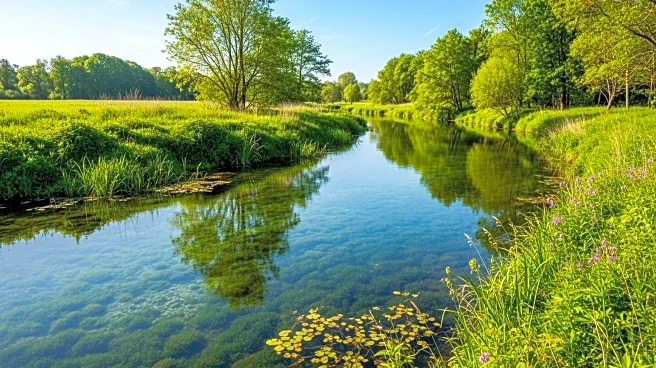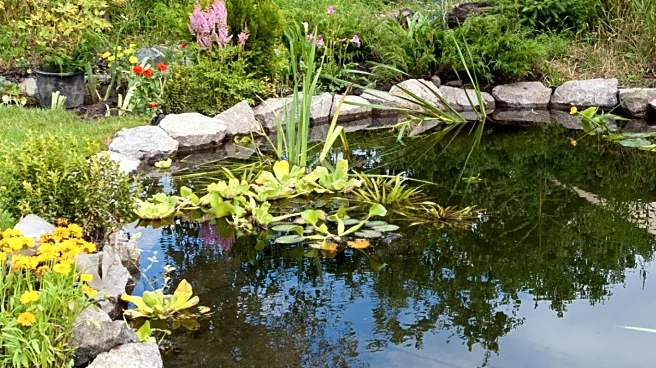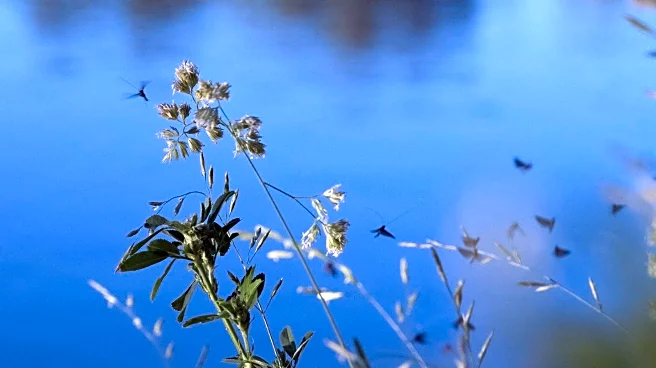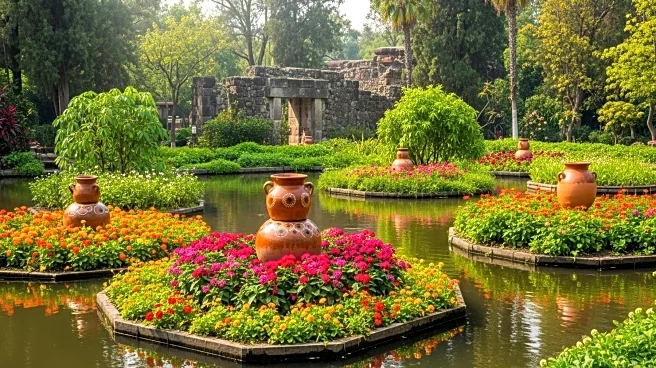What is the story about?
What's Happening?
The Herts and Middlesex Wildlife Trust has completed a significant restoration project on the River Ash, a rare chalk river located at the Easneye Estate near Hertford. This ambitious initiative involved restoring a 4.3-mile stretch of the river to its original winding course, creating new wetland habitats, and implementing measures to protect the area from flooding. The project, which took nearly eight years to plan and execute, included raising the river bed with over 3,000 tonnes of gravel and adding more than 300 woody debris features to provide shelter for fish. The restoration aims to support vulnerable species such as water voles, wild brown trout, and kingfishers, while addressing challenges like pollution, over-abstraction, and climate change impacts.
Why It's Important?
The restoration of the River Ash is crucial for maintaining biodiversity and ecosystem balance in the region. Chalk rivers are rare and support a variety of endangered species, making their preservation vital for environmental health. By restoring the river to its natural state, the project not only enhances the habitat for wildlife but also provides benefits to human communities, such as flood protection and improved water quality. This initiative serves as a model for future conservation efforts, demonstrating the potential for positive change in river management and nature recovery.
What's Next?
The successful completion of the River Ash restoration project sets a precedent for similar conservation efforts in Hertfordshire and beyond. The Herts and Middlesex Wildlife Trust hopes to inspire other landowners and organizations to undertake similar projects, promoting the recovery of natural habitats and ecosystems. Continued monitoring and maintenance will be essential to ensure the long-term success of the restoration and to adapt to any future environmental challenges.
Beyond the Headlines
The restoration of the River Ash highlights the importance of collaborative efforts between conservation organizations and local landowners. It underscores the need for sustainable practices that balance human activities with environmental preservation. The project also raises awareness about the impacts of climate change on natural habitats and the urgent need for proactive measures to mitigate these effects.
AI Generated Content
Do you find this article useful?













